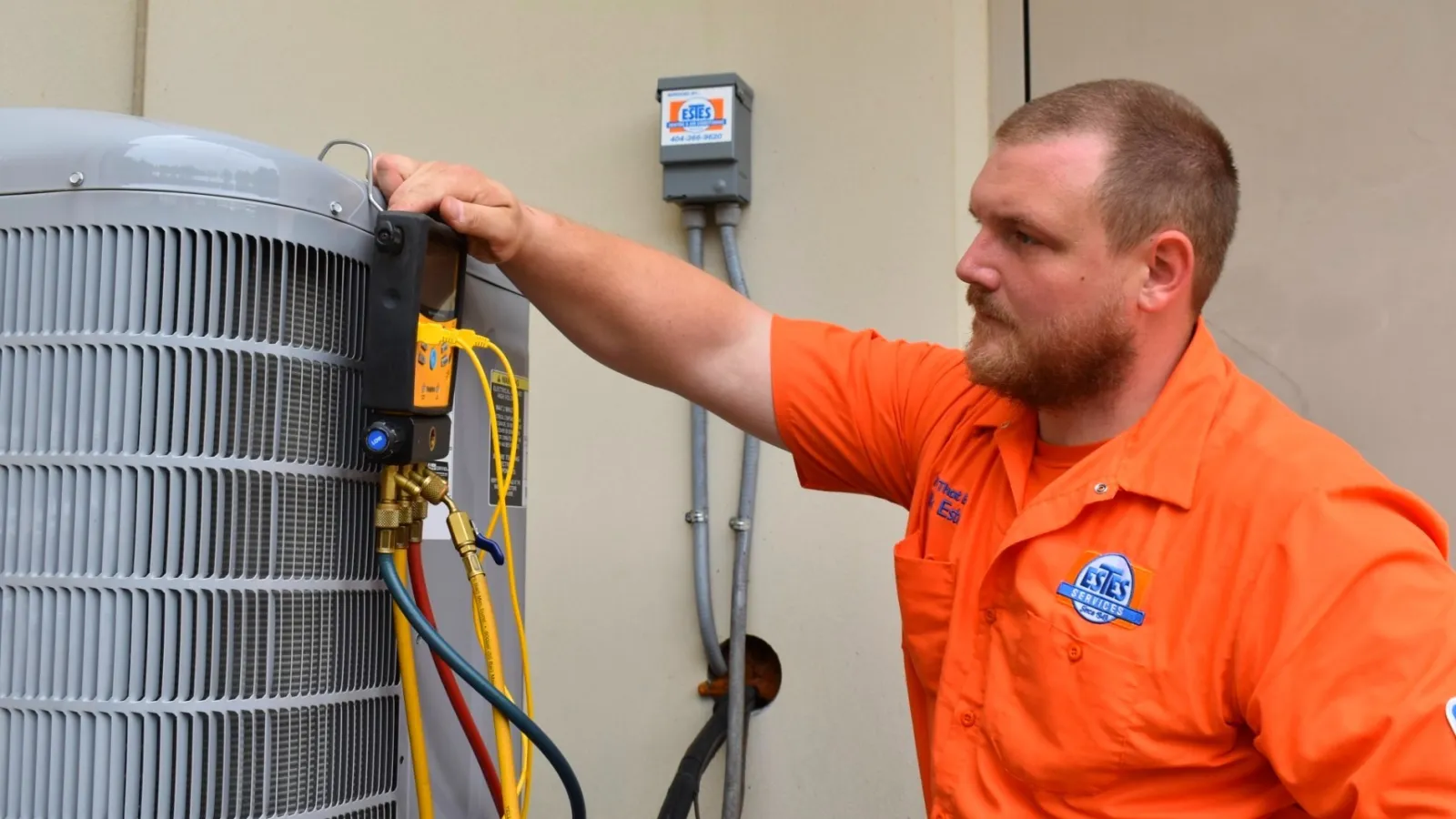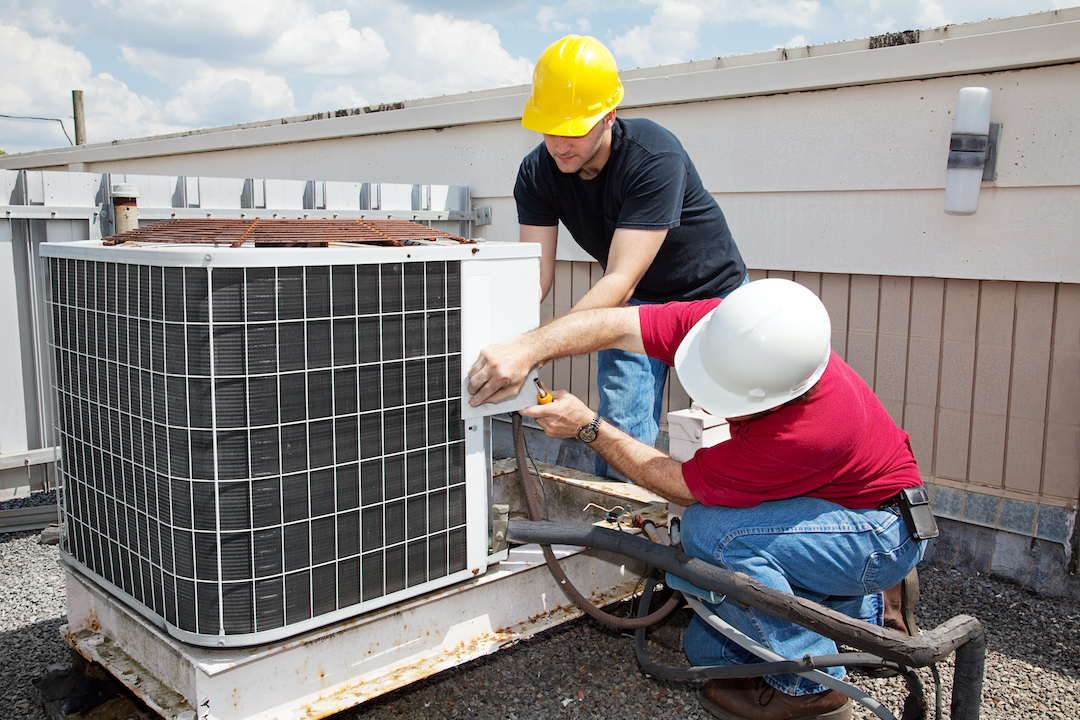Top Mistakes to Avoid During heat pump installation ooltewah tn
Top Mistakes to Avoid During heat pump installation ooltewah tn
Blog Article
Just How a Heatpump and Heating System Interact to Optimize Your Home's Heating Efficiency
Understanding just how a warm pump and furnace interact is necessary for house owners seeking reliable heating solutions. Each system has its toughness, offering a well balanced technique to home comfort. The heatpump masters modest temperatures, while the furnace supplies rapid heat during severe cold. This synergy not just reduces power costs however likewise boosts the life-span of both appliances. What elements affect this collaboration, and just how can property owners optimize their benefits?
Comprehending Heat Pumps: Exactly How They Function
Many people might be unknown with their internal workings, heat pumps play a necessary function in contemporary home heating systems. These gadgets run by transferring warm from one place to an additional, using the concepts of thermodynamics. In colder months, a heatpump essences heat from the outside air, ground, or water, and transfers it inside to warm the home. Alternatively, throughout warmer months, it can reverse the process, working as an ac system by eliminating warmth from inside to the outside.Heat pumps consist of an evaporator, compressor, growth, and condenser valve. The refrigerant within the system takes in heat as it evaporates at reduced temperature levels and stress. The compressor after that boosts the stress and temperature of the refrigerant, enabling it to release heat as it condenses. This efficient process can significantly decrease energy consumption contrasted to typical home heating techniques, making warm pumps a sustainable selection for environment control in homes.
The Function of Heating Systems in Home Heating
Furnaces play an important role in home heating by offering a reputable source of warmth throughout the chillier months. They operate by generating warmth with combustion or electric resistance, dispersing it throughout the home by means of ducts or glowing systems. The performance of a heating system is commonly determined by its Annual Gas Usage Efficiency (AFUE) ranking, which suggests how properly the system converts gas into heat.Furnaces can make use of different energy sources, consisting of gas, electrical energy, propane, or oil, enabling property owners to pick the most ideal option for their demands. Unlike heat pumps, which might struggle in extreme cool, furnaces keep constant efficiency, making sure that interior temperatures continue to be comfy no matter of outdoor problems. Additionally, contemporary heaters usually come geared up with innovative technology, such as variable-speed blowers and clever thermostats, improving their performance and responsiveness. This flexibility makes heating systems an essential element in comprehensive home heating strategies.

Benefits of Using Both Systems With Each Other
Incorporating the toughness of both heaters and heatpump can cause a much more efficient and reliable home heating option. Using both systems allows homeowners to take advantage of the heatpump's power performance throughout milder temperatures while relying on the furnace for even more severe cold conditions. This twin strategy can substantially minimize energy prices, as heatpump take in much less electricity than traditional home heating approaches when temperature levels are moderate.Additionally, making use of both systems together can enhance convenience levels in the home. Warmth pumps can provide constant, even heating, while heating systems can rapidly elevate ambient temperatures when needed. Furthermore, the integration of both systems can expand the life expectancy of equipment by lowering damage on each system, as they share the work. Inevitably, house owners can enjoy a balanced, cost-efficient heating option that readjusts perfectly to differing climate condition, ensuring a warm and inviting home throughout the winter season.
Just How Heat Pumps and Furnaces Complement Each Various Other
When homeowners integrate heatpump and heating systems, they develop a corresponding heating unit that makes best use of efficiency and comfort. Heatpump run by moving warm from the outdoors air or ground, making them extremely effective in modest environments. They stand out throughout milder temperatures, offering affordable home heating. On the other hand, furnaces generate warm through burning or electric resistance, providing strong, immediate heat throughout severe cold conditions.The combination of these two systems allows for dynamic adjustments based on temperature level changes. During warmer months or milder wintertime days, the warm pump can take the lead, conserving power and reducing costs. As temperature levels decrease, the heating system can perfectly engage, ensuring regular heat throughout the home. This synergy not just maximizes energy use yet likewise enhances the life-span of both systems, as each device operates within its perfect performance array. Together, they develop a well balanced environment that adjusts to varying climate needs.
Optimizing Efficiency: Tips for Homeowners
Home owners can improve their heating performance through numerous sensible methods. Establishing a normal upkeep routine, integrating clever thermostat innovation, and implementing efficient insulation and sealing remedies are essential actions. These steps not just enhance convenience but also lower power expenses.
Normal Maintenance Schedule
To guarantee optimal home heating effectiveness, establishing a routine maintenance schedule is necessary for any kind of home. Property owners need to prioritize regular examinations of both heatpump and furnaces to determine peak performance. This includes altering air filters each to 3 months, as clogged filters can greatly decrease read review effectiveness. In addition, organizing specialist maintenance at the very least once a year enables specialists to determine and attend to potential problems prior to they intensify. House owners should also cleanse the heatpump's exterior device to stop particles build-up that can hinder air flow. By adhering to a routine upkeep routine, homeowners not just enhance their heating systems' performance however also expand their life-span, leading to higher convenience and minimized power expenses throughout the cooler months.
Smart Thermostat Assimilation
Integrating a clever thermostat right into a home heater can greatly boost power performance, especially as it enables for specific control over temperature level setups. These gadgets can find out the homeowner's routine and preferences, automatically readjusting the temperature level to optimize convenience while reducing power use. They can lower home heating during times when the home is unoccupied, minimizing unnecessary consumption. Numerous wise thermostats additionally give real-time energy use data, allowing home owners to make enlightened choices concerning their home heating routines. In addition, remote accessibility through mobile phone apps enables individuals to adjust setups from anywhere, ensuring the home is cozy upon return. In general, wise thermostat assimilation not only boosts comfort but considerably adds to power financial savings and efficiency.
Insulation and Securing Solutions
Smart thermostats play an important duty in energy performance, yet their performance can be substantially boosted by correct insulation and securing services. House owners must focus on shielding wall surfaces, attics, and floors to minimize heat loss. Premium insulation products, such as spray foam or fiberglass, can greatly boost thermal resistance. Furthermore, sealing voids around doors, windows, and ducts stops chilly air seepage and warm retreat. Weatherstripping and caulking are effective methods for dealing with these leakages - furnace replacement. Routine inspections for air leakages, along with using blower door examinations, can aid recognize trouble locations. By purchasing insulation and sealing, property owners can optimize the efficiency of their heating unit, inevitably bring about lowered power usage and lower utility costs
Typical Myths About Warmth Pumps and Furnaces
What false impressions border warm pumps and heating systems? Numerous individuals erroneously think that warm pumps are ineffective in colder environments. In truth, contemporary heatpump are made to run successfully also in low temperatures, providing dependable heating throughout winter. An additional typical myth is that heaters are always more effective than heatpump. However, this relies on the details power resources and performance scores of the units in inquiry. Some may additionally believe that using both systems at the same time is unneeded, however in truth, this combination can optimize heating effectiveness, especially throughout extreme weather condition conditions. Furthermore, individuals usually presume that heatpump require consistent upkeep, when truthfully, they have comparable upkeep needs to typical furnace. By unmasking these misconceptions, property owners can make even more enlightened decisions regarding their home heating alternatives, eventually bring about improved convenience and energy effectiveness in their homes.
Upkeep Considerations for Combined Systems

Often Asked Concerns
Can Heat Pumps Work Successfully in Extremely Cold Climates?
Heatpump can struggle in incredibly cool climates due to minimized performance and heat extraction constraints. Advancements in technology have led to designs made for far better efficiency in such problems, boosting their feasibility in extreme settings.
For How Long Do Warm Pumps and Furnaces Typically Last?
Heatpump usually last 15 to twenty years, while heating systems have a lifespan of 15 to thirty years. Normal maintenance can prolong their durability, making certain effective operation and reducing the demand for premature substitutes.

What Is the Average Price of Putting Up Both Systems?
The average expense of mounting both a heatpump and a furnace commonly ranges in between $5,000 to $10,000 - furnace replacement. Variables influencing this expense include system size, installment intricacy, and regional labor rates
Are There Tax Rewards for Making Use Of Energy-Efficient Home Heating Systems?
Lots of homeowners ask about tax rewards for energy-efficient heater. Various government and state programs often provide credit scores or discounts, urging the adoption of lasting technologies to reduce energy intake and advertise ecological duty.
Exactly how Do I Pick the Right Dimension Heatpump and Heater?
Choosing the ideal size warmth pump and furnace entails computing the home's square video footage, considering insulation top quality, and assessing regional environment. Consulting a specialist can guarantee ideal system performance and power effectiveness based upon certain requirements. ductless mini splits. Understanding just how a warm pump and furnace job together is crucial for home owners looking for efficient home heating options. In colder months, a warm pump essences warmth from the outdoors air, ground, or water, and transfers it indoors to warm up the living space. When property owners incorporate warmth pumps and heating systems, they develop a corresponding heating system that maximizes effectiveness and convenience. Warm pumps run by transferring find this heat from the outdoors air or ground, making them very efficient in moderate environments. Warm pumps can have a hard time in exceptionally chilly environments due to reduced efficiency and warm removal constraints
Report this page